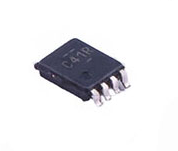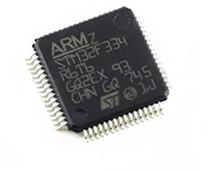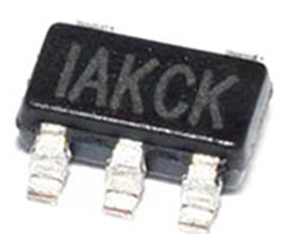The LM2596S Buck Module is a linear voltage regulator (LDO) that reduces voltage by dissipating excess energy as heat without generating any elevated current. Buck converters can be very efficient and provide a boost in current output. Buck converters are one of the best ways to provide a regulated voltage from a battery because they don't waste energy in the process of stepping down the input voltage like linear regulators do. The LM2596S Buck Module has a multi-turn trimmer potentiometer (potentiometer) that you can use to adjust the output voltage of the LM2596. Since the trimmer has 25 turns of adjustment, you can easily adjust the output of the module to the voltage you need.
An example of the LM2596S Buck Module feature, running the test with a 15V power input and adjusting the module's output to 5V with a 100 ohm load connected to the output. The input current is 24.8 mA and the output current is 47.84 mA. This is almost twice the input current. This never happens with linear regulators. We were able to drop the input supply voltage down to 6.5V before the output voltage started to drop below 5V. Even though the input supply voltage is 6V, the output voltage is still 4.99V. When we adjusted the input supply voltage, the output did not drop slightly until the aforementioned 6.5V or so, and we didn't need to adjust the trimmer pot at all to keep the LM2596 at the same output voltage.
Specification:
Input Voltage: 3 to 40 Volts
Output Voltage Range: 1.23 to 37V
Maximum output current: 3
Adjustment: 25-Turmpot
Efficiency: Up to ~93%
Switching frequency: 150kHz
Built-in Protections: Thermal Shutdown and Current Limit
Length 43.2 mm (1.701 in)
Width 21 mm (0.827 in)
Height 14 mm (0.551 in)
IMPORTANT: This module has an onboard power indicator LED connected to the output of the module. The LED is connected in series with a 1k ohm resistor as a current limiting resistor. If you adjust the module to output voltages above 12V, we recommend removing the LED or replacing the 1k ohm resistor with a higher one to prevent the resistor from overheating and protect the LED from damage.


 90853.24USD
90853.24USD 82.18USD
82.18USD 2.07USD
2.07USD 0.14USD
0.14USD 3115.95USD
3115.95USD 13.48USD
13.48USD 891.72USD
891.72USD 136.63USD
136.63USD 0.13USD
0.13USD 0.05USD
0.05USD 0.13USD
0.13USD
 Favorites
Favorites History
History

 Feedback
Feedback








